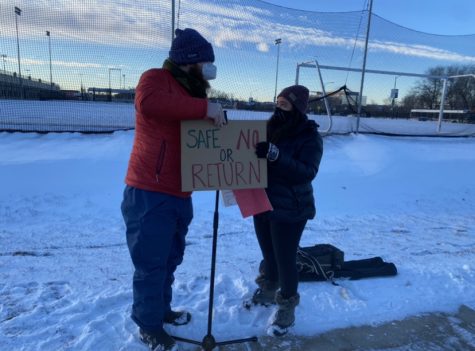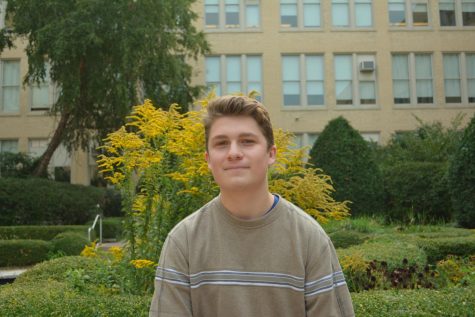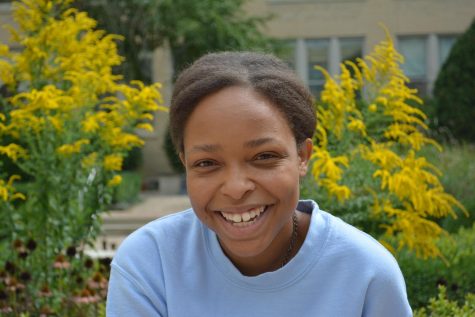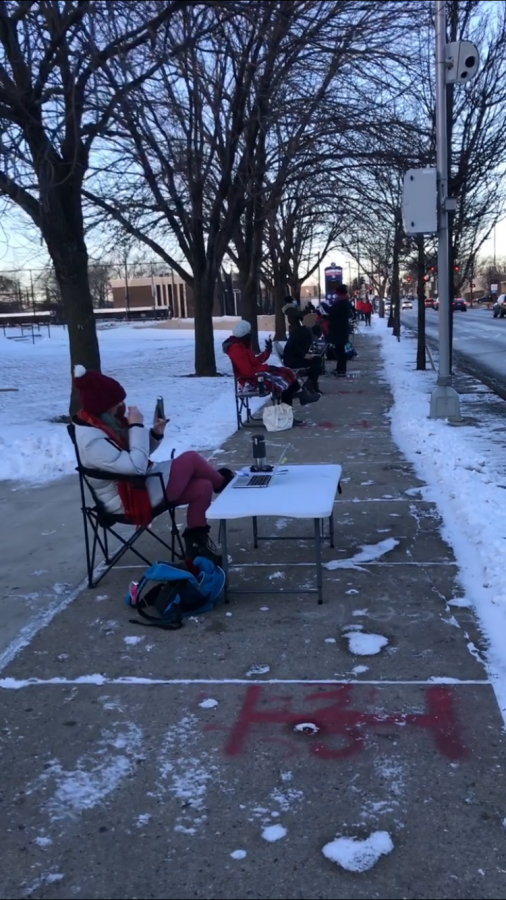A look back at a brief moment in a memorable struggle: The Lane teach-out
Lane teachers, as a rebuke of CPS’ reopening plans, conducted their classes on Jan. 21 in the frigid cold, forming a line up and down Addison.
As the already tenuous relationship between the Chicago Teachers Union (CTU) and CPS grew frostier in late January, teachers moved their virtual classrooms outside as a unique form of protest against CPS reopening plans. The “teach-outs,” as they were called, were some of the most memorable moments of a reopening tussle that captivated local and national attention alike.
A month later, the standoff has ended and relations, at least for now, have thawed: CPS and the CTU came to a reopening agreement that slates pre-K and special education students and staff to return on Feb.11; kindergarten and 5th grade staff on Feb. 22, followed by those students on March 1, along with 6th-8th grade teachers and staff; and 6th-8th grade students on March 8, according to CPS.
The Champion thought it fitting to take a look back at these working-protests, a unique point in the complicated history between CTU and CPS.
On Jan. 21, Lane teachers dotted a sedentary protest line on Addison and Rockwell just outside of the Lane building and adjacent to the stadium. English, science, math, music and other teachers led their usual classes directly facing the usual onslaught of morning traffic.
Like many others there, Lane teacher Dane Haiken was adamant that this scene was not only an educational protest, but an act of solidarity with his colleagues who were going to be forced to return early to in-person learning. K-8 had been told by CPS to return to in-person learning the following Monday, and CPS threatened to lock teachers out of their virtual education Google Classroom accounts as punishment if they did not comply. Teachers and students in the special education programs of many schools had already returned to buildings.
“[We’re doing this] to raise awareness and to communicate to everyone that other teachers and students are next in being forced to go back into the buildings when clearly the conditions are not safe,” Haiken said.
As traffic passed, drivers voiced their support, and displeasure, with the teachers. One driver with a pickup truck expressed his support for fellow members of a union. Another, in a minivan with a much louder, forceful voice yelled, “The Catholic schools are back! The Catholic schools are back!”
The teachers who heard the comments paid them no mind.

Your donations directly fund the Lane Tech student journalism program—covering essential costs like website hosting and technology not supported by our school or district. Your generosity empowers our student reporters to investigate, write, and publish impactful stories that matter to our school community.
This website is more than a publishing platform—it's an archive, a research tool, and a source of truth. Every dollar helps us preserve and grow this resource so future students can learn from and build on the work being done today.
Thank you for supporting the next generation of journalists at Lane Tech College Prep!

Aidan is a senior in his second year at the Champion. In his spare time, Aidan likes reading, watching and playing soccer and re-watching The Sopranos....

Naturally having harnessed the wisdom that comes with age, Finley, now a senior in her third year with The Champion (formerly The Warrior), spends her...

